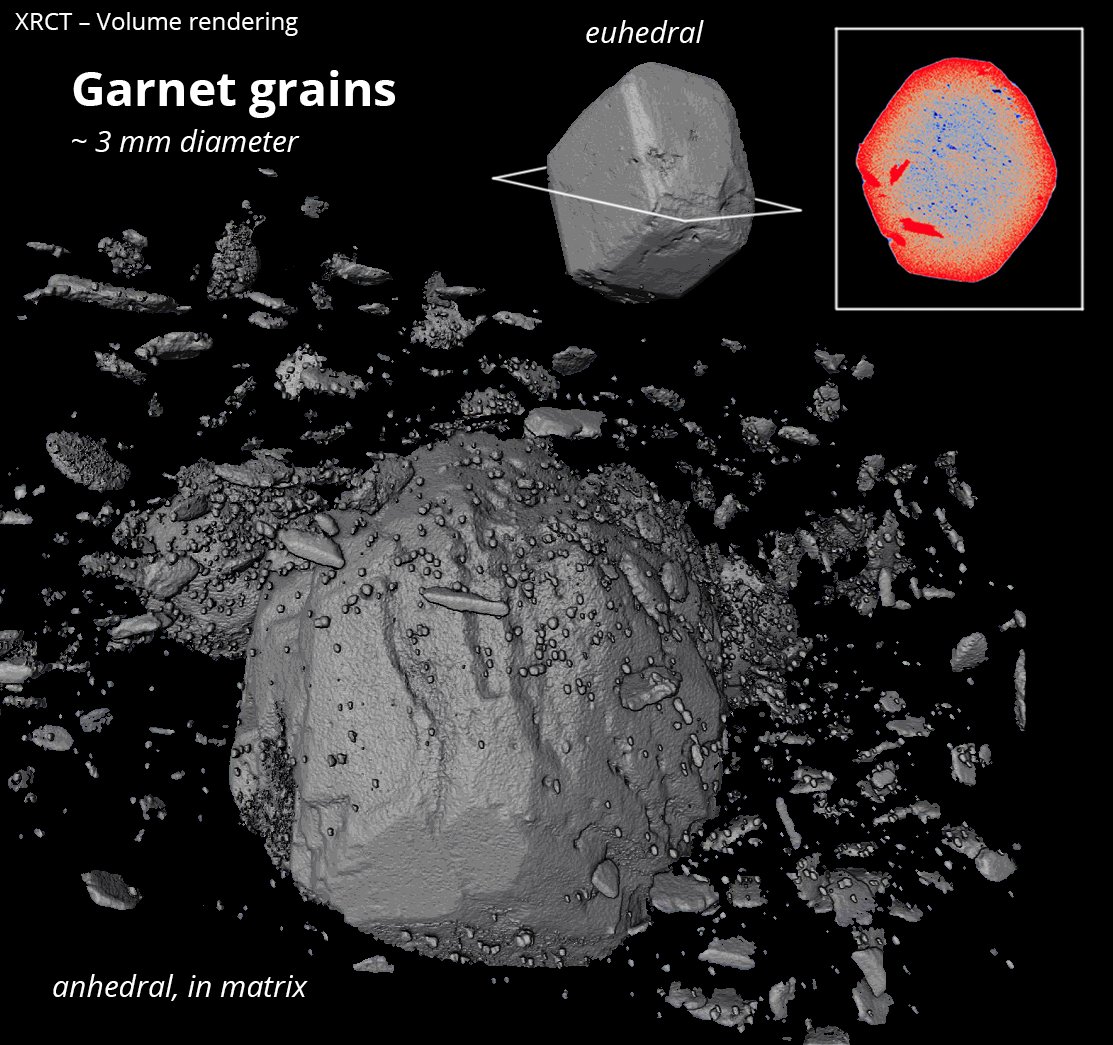
.2.
Mineral Inclusion-Host Systems
Background
Minerals grow and breakdown in response to changing conditions - pressure (P), temperature (T), fluids available/present (X), and intensity of deformation (strain). Conventional methods to characterize these conditions of growth and breakdown rely on the chemical (thermodynamic) equilibrium between minerals providing more accurate information about T than about P.
The relatively novel method of inclusion barometry, in which a host mineral acts as a ‘pressure capsule’ around minerals trapped inside of them (i.e. inclusions), relies on the mechanical equilibrium (i.e. the balance of forces) between host and inclusions to determine inclusion strain, from which we can calculate P of entrapment. This method relies on the assumption that the inclusion becomes and remains mechanically isolated from the rest of the rock after entrapment. In my work, I seek to investigate the macro to nano-scale relationships between host minerals and their inclusions, in order to get a better understanding of how pressure information is recorded in metamorphic rocks. In order to reliably interpret P information in term of larger-scale tectonic and geodynamic processes at play at the time of inclusion entrapment, we need to investigate any post-entrapment modifications that may invalidate the results of inclusion barometry.
Why do we care?
Geologists often interpret pressure information as ‘lithostatic pressure’, i.e. directly relatable to depth. However, pressure may also be related to deformation, i.e. ‘directed pressure’. Being able to tie P to depth is important if we want to determine exactly how deep metamorphic processes are active, which is fundamental to provide field-grounded validation to geodynamic models and reconstructions. Are the pressures we are retrieving truly translatable to depth, or do they encompass other processes related to deformation? In addition, do inclusions truly remain isolated after their entrapment, and if not, what are the implications for the application of inclusion barometry?
Project Goals
1
Testing inclusion barometry in a prograde metamorphic sequence
2
investigating pre- and post-entrapment relationships in inclusion-host systems
Research Questions and Methods
1) Are inclusions truly isolated after entrapment?
To what extent can inclusions and host interact after entrapment?
2) In a suite of rocks with otherwise demonstrated increase of P and T regionally, do the inclusions reflect that or not?
If not, what does the inclusion entrapment information truly reflect?

XR-Ray Computer Tomography (XRCT)

XRCT (inclusions)

Electron Microprobe (element mapping, here - Calcium)

Electron Backscatter Diffraction (EBSD) - crystallographic orientation of minerals

EBSD - quartz inclusions

Titanium-in-quartz (thermometry)

